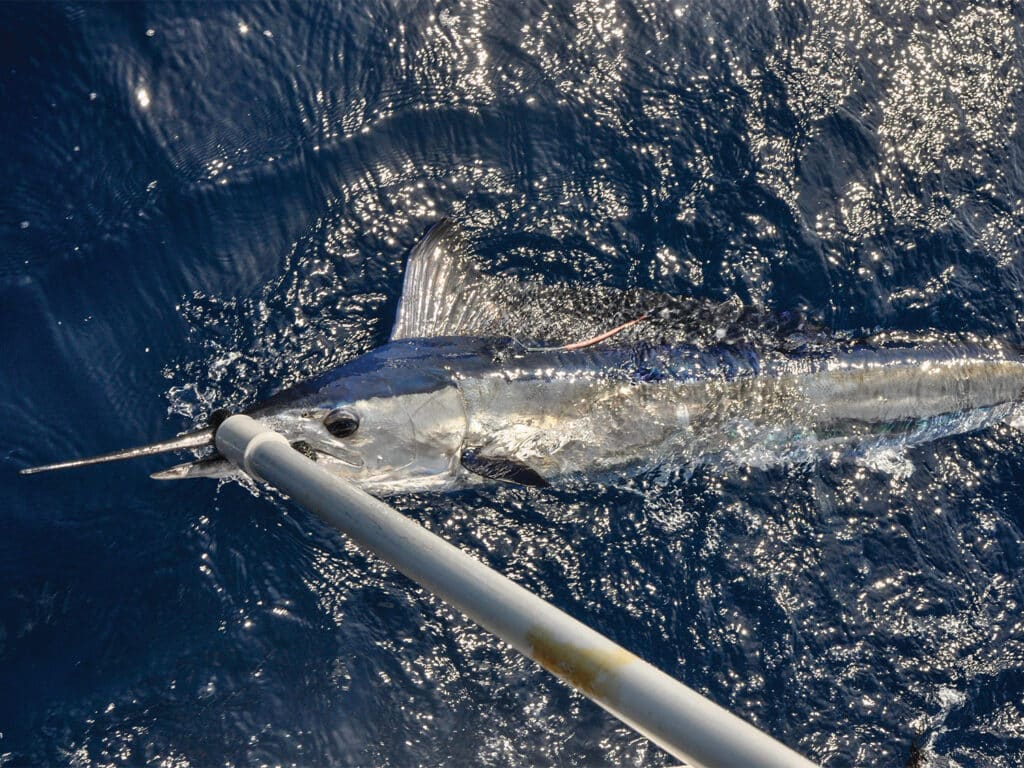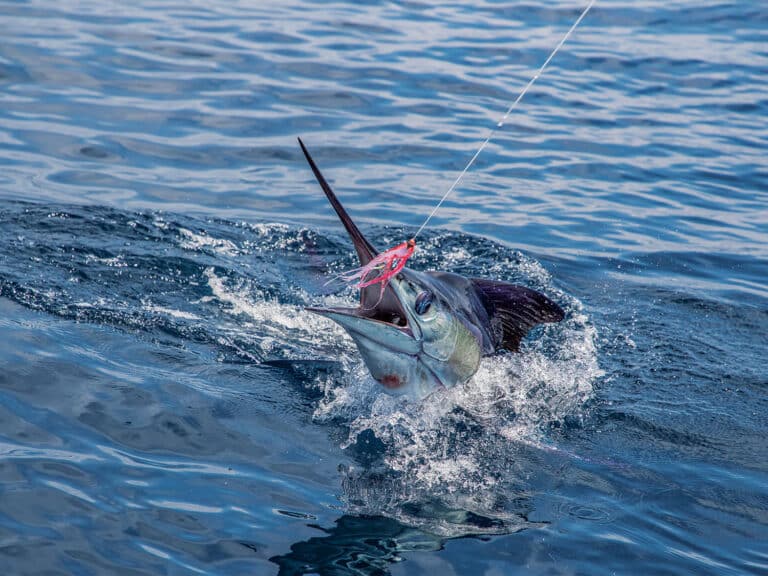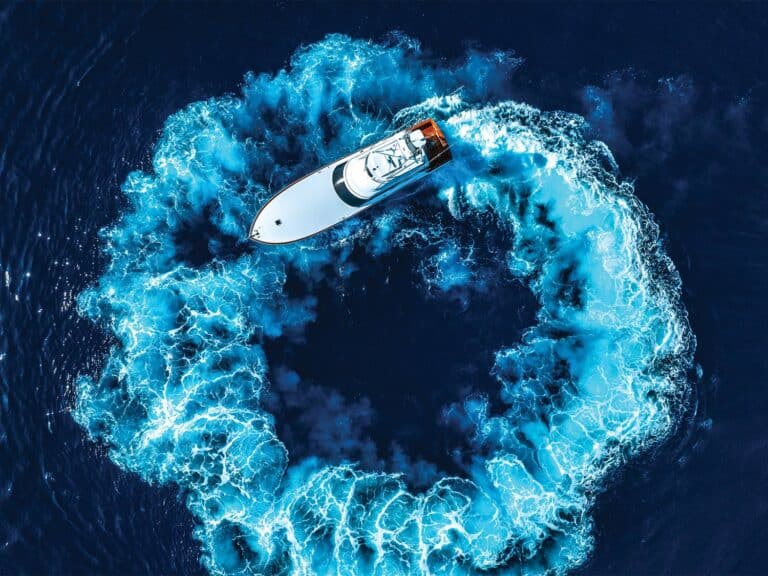
Special delivery: Sign up for the free Marlin email newsletter. Subscribe to Marlin magazine and get a year of highly collectible, keepsake editions – plus access to the digital edition and archives.
From the moment I stepped out of the air-conditioned arrival hall at Palma International Airport into the sunlight and intense heat of the midday Spanish summer sun, I was only too aware that succeeding in my goal was going to be tough. Success may well have been possible, but it was a long way from what could be described in any way as probable. I was teaming up once again with Capt. Vince Riera and the crew of Mad Max on the Balearic island of Majorca for two days in pursuit of the longest of long shots: catching the first Mediterranean spearfish on fly.
Mediterranean spearfish are a subspecies of the Atlantic longbill spearfish, a species that has rarely been caught on fly; in fact, only two of the 14 available tippet categories listed with the IGFA are currently filled. The problem is availability: While longbill spearfish are widely distributed throughout the Atlantic Ocean, up until very recently nowhere do they occur in sufficient numbers to specifically target them.
I wrote about catching Mediterranean spearfish in the March 2021 issue of Marlin (“Mysterious Majorca”), and the fishing seems to be getting even better here. Since the start of the 2023 season, the numbers of these small yet beautiful billfish that Riera has encountered has been staggering. On just one memorable day, his crew tagged eight spears from 10 strikes. Their 2023 season began in April, and until the time of this writing in late June, the Mad Max team has tagged around 70 fish. This is even more remarkable when you consider that the overwhelming majority of charters want to target big bluefin tuna. During past trips, Riera and I had talked about the possibility of catching a spearfish on fly.
Day One, and no sooner had we arrived in one of the most productive areas when we spotted a spearfish finning lazily on the glassy-calm surface. Riera positioned our spread of hookless teasers and baits in front of the fish, which responded immediately by grabbing a skipping ballyhoo. Teasing the fish to within casting range with the engines shifted into neutral and the fish clearly visible less than 30 feet behind the transom, I made my first cast and the spearfish swam toward my fly. Was it really going to be this easy? Sadly not. At the very last moment, the fish veered away from the fly, but it remained swimming around just off our stern for three or four minutes. During this time, I made about 20 casts, and on several occasions, it glided over to closely inspect the fly. Eventually, it faded into the deep. That day, we raised another five spearfish, two of which we teased to within casting range. This time, their aggressive body language showed that they were intent on eating something, yet neither fish would switch from the baits to my fly.
Day Two, and it was time to make some adjustments. Riera had brought squid as an alternative to the ballyhoo and scad we had used for baits the day before. The previous day I had used a blue-and-silver fly. Seemingly this was the perfect match to the most successful lures Riera had been using so far this season, but all day my gut had been telling me to use hot pink, a color that I have had success with when fly-fishing for sailfish. So, as we headed back to the fishing grounds, I switched to a pink fly, adding a sliding popper head to create a bit more disturbance.
Conditions again were perfect. After about an hour, we raised the first spearfish—an aggressive fish that teased perfectly to the boat, its fins glowing an intense lilac blue. When I cast, it responded immediately, swiping at the fly with its bill before circling away a short distance. Instinctively, I started to load the rod to recast, but just as I reached the point of no return, the fish was back. This time, it was clearly looking to eat, and I watched in helpless disbelief as I more or less pulled the fly out of its mouth. As we resumed fishing, we surmised that its feeding tactic had been to first disable its intended meal, then return to actually eat it.
It wasn’t long before I was casting at another hot fish. This time, I left the disabled fly sitting in the water, and I watched the fish circle and swam back toward the fly. At this point, I gave the now-stationary fly a short tug to make the popper head bloop: That did it! The spear rushed the fly, and I did my best to set the hook, but as soon as the fish started to run, the fly fell free.
Soon we raised our eighth fish of the day, and it was another hot one. The fish immediately rushed the fly, giving it an aggressive swipe with its bill. Once again, I let the fly sit, giving it just a few short pulls. This one clearly wanted to eat, and I watched as it fully inhaled the fly before turning away from the boat, giving me the absolute best opportunity to firmly set the hook in the corner of its jaw. For a few seconds, it just shook its head before running a short distance and starting to jump. I was terrified that the fly would fall out, but this time, everything went perfectly, and after about 10 heart-stopping minutes, a gloved hand secured my fish.
We had already decided that if we were successful, then we would not kill the fish in order to make an official record claim. I had caught my fish according to IGFA rules, and that was good enough for me. I have absolutely no issue with anyone who wants to officially claim a world record, but on this occasion, I was more than happy to watch the fish glide back into those deepest of blue waters, the first Mediterranean spearfish caught on fly.







